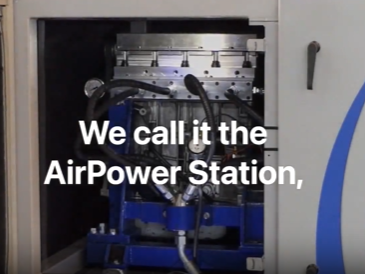Introduction Exploring Sustainability in Swiss International Air Lines
Swiss International Air Lines (SWISS) has emerged as a key player in the aviation industry, demonstrating a steadfast commitment to sustainability.
This exploration delves into SWISS’s initiatives and practices aimed at mitigating its environmental impact. From investing in fuel-efficient aircraft to engaging in carbon offset programs, SWISS navigates the skies with a conscientious approach. Join us on this journey to uncover how SWISS International Air Lines balances the demands of air travel with a dedication to environmental responsibility.
Sustainability initiatives in Swiss International Air Lines (SWISS)
Swiss International Air Lines (SWISS) has implemented several sustainability initiatives to reduce its environmental footprint:
1. Fuel-Efficient Fleet: SWISS invests in modern and fuel-efficient aircraft, enhancing overall energy efficiency and minimizing carbon emissions during flights.
2. Carbon Offset Programs: The airline actively participates in carbon offset programs, allowing passengers and the company itself to compensate for emissions by supporting projects that reduce greenhouse gases.
3. Sustainable Aviation Fuel (SAF): SWISS explores and invests in sustainable aviation fuel, aiming to replace traditional jet fuels with more environmentally friendly alternatives, thereby reducing the carbon intensity of their operations.
4. Waste Reduction: SWISS focuses on minimizing waste generation during flights and on the ground, implementing measures to recycle and reduce single-use plastics.
5. Energy-Efficient Operations: The airline adopts energy-efficient practices in its operations, from ground services to in-flight services, contributing to a more sustainable aviation industry.
6. Community Engagement: SWISS actively engages with communities to address environmental concerns and collaborates with stakeholders to promote sustainable practices in the regions it serves.
Through these initiatives, Swiss International Air Lines demonstrates a holistic commitment to sustainability, aiming to balance the necessity of air travel with responsible environmental stewardship.
Fuel-Efficient Fleet in Swiss International Air Lines (SWISS)
Swiss International Air Lines (SWISS) prioritizes a fuel-efficient fleet as a key component of its sustainability strategy. The airline invests in modern and technologically advanced aircraft to enhance fuel efficiency and reduce its environmental impact. By regularly updating its fleet with newer models, SWISS can take advantage of the latest innovations in aerodynamics, engine efficiency, and lightweight materials.
This commitment to a fuel-efficient fleet not only helps lower carbon emissions but also contributes to operational cost savings. SWISS aims to strike a balance between providing reliable and comfortable air travel services while minimizing its carbon footprint. The adoption of advanced aircraft technology underscores the airline’s dedication to sustainable aviation practices and aligns with industry efforts to address environmental challenges in air transportation.
Carbon Offset Programs in Swiss International Air Lines (SWISS)
Swiss International Air Lines (SWISS) actively engages in carbon offset programs as part of its broader sustainability initiatives. These programs allow SWISS to compensate for the greenhouse gas emissions generated during its flights by investing in projects that reduce or capture an equivalent amount of carbon elsewhere.
Passengers flying with SWISS often have the option to participate in carbon offset programs, enabling them to offset the environmental impact of their air travel. The funds from these programs may support projects such as reforestation, renewable energy initiatives, or other activities aimed at mitigating carbon emissions.
By incorporating carbon offset programs into its operations, SWISS demonstrates a commitment to environmental responsibility and seeks to balance the unavoidable emissions associated with air travel with efforts to contribute positively to global sustainability goals.
Sustainable Aviation Fuel (SAF) Implementation in Swiss International Air Lines (SWISS)
Swiss International Air Lines (SWISS) is actively involved in the implementation of Sustainable Aviation Fuel (SAF) as part of its sustainability strategy. SAF is a key component in the aviation industry’s efforts to reduce carbon emissions. SWISS aims to replace traditional jet fuels with SAF, which is produced from renewable resources such as biomass, waste oils, or agricultural residues.
By integrating SAF into its operations, SWISS seeks to significantly decrease the carbon intensity of its flights. This transition to sustainable aviation fuel aligns with the airline’s commitment to mitigating the environmental impact of air travel.
SWISS’s efforts in SAF implementation contribute to the industry-wide goal of reducing aviation emissions and promoting more sustainable practices within the airline sector. This proactive approach reflects SWISS’s dedication to environmental stewardship and addressing the challenges of climate change in aviation.
Waste Reduction Program in Swiss International Air Lines
Swiss International Air Lines (SWISS) has implemented a comprehensive waste reduction program to minimize its environmental footprint.
Key aspects of their waste reduction initiatives include:
1. In-Flight Recycling: SWISS promotes recycling practices during flights, aiming to reduce the amount of waste generated on board. This includes recycling materials such as paper, plastic, and aluminum.
2. Single-Use Plastics Reduction: The airline actively works to minimize the use of single-use plastics in its operations, opting for sustainable alternatives and encouraging passengers to participate in these efforts.
3. Waste Sorting on Ground: SWISS engages in effective waste sorting and recycling processes on the ground, ensuring that waste generated at airports and other facilities is managed responsibly.
4. Catering Waste Management: The airline collaborates with catering services to minimize food waste and ensure that packaging materials are recycled or disposed of in an environmentally friendly manner.
5. Passenger Awareness: SWISS educates passengers about the importance of waste reduction and encourages responsible disposal practices during their travels.
Through these measures, SWISS demonstrates its commitment to sustainable aviation by addressing the challenges associated with waste generation in the airline industry. The waste reduction program aligns with broader environmental goals and contributes to a more eco-friendly approach to air travel.
Energy-Efficient Operations in Swiss International Air Lines (SWISS)
Swiss International Air Lines (SWISS) emphasizes energy-efficient operations as a key aspect of its sustainability efforts.
This involves implementing practices across various facets of the airline’s operations:
1. Ground Services: SWISS incorporates energy-efficient technologies and practices in ground services, including airport operations, baggage handling, and maintenance activities.
2. Aircraft Operations: The airline focuses on optimizing flight operations to enhance fuel efficiency, reduce emissions, and minimize energy consumption during flights.
3. Terminal Facilities: SWISS works to improve energy efficiency in its terminal facilities, employing technologies such as energy-efficient lighting, heating, ventilation, and air conditioning systems.
4. Investment in Technology: SWISS invests in modern, fuel-efficient aircraft and adopts advanced technologies that contribute to overall energy savings in both ground and air operations.
5. Renewable Energy: The airline explores the use of renewable energy sources where feasible, contributing to a cleaner and more sustainable energy mix for its operations.
By prioritizing energy-efficient practices, SWISS aims to not only reduce its environmental impact but also enhance operational efficiency, ultimately aligning with the broader goals of sustainable aviation.
Community Engagement Programs in Swiss International Air Lines (SWISS)
Swiss International Air Lines (SWISS) actively engages in community outreach and sustainability programs to address environmental concerns and foster positive relationships in the regions it serves.
Key elements of SWISS’s community engagement initiatives include:
1. Environmental Education: SWISS participates in and supports programs that promote environmental awareness and education, both within the airline industry and among local communities.
2. Local Partnerships: The airline collaborates with local organizations, NGOs, and environmental groups to address specific community needs and contribute to sustainable development projects.
3. Cultural and Social Initiatives: SWISS may engage in cultural and social initiatives that align with the values and priorities of the communities it operates in, strengthening its connection with local residents.
4. Employment and Training Opportunities: SWISS may provide employment and training opportunities for local residents, contributing to the economic development of the communities surrounding its operational bases.
5. Support for Sustainable Practices: The airline may support and promote local sustainability initiatives, encouraging environmentally responsible practices among its staff and the communities it serves.
Through these community engagement programs, SWISS aims to be a responsible corporate citizen, actively addressing social and environmental concerns while contributing positively to the well-being of the communities it operates in.
Conclusion for Exploring Sustainability in Swiss International Air Lines
Swiss International Air Lines (SWISS) actively engages in community outreach and sustainability programs to address environmental concerns and foster positive relationships in the regions it serves.
Key elements of SWISS’s community engagement initiatives include:
1. Environmental Education: SWISS participates in and supports programs that promote environmental awareness and education, both within the airline industry and among local communities.
2. Local Partnerships: The airline collaborates with local organizations, NGOs, and environmental groups to address specific community needs and contribute to sustainable development projects.
3. Cultural and Social Initiatives: SWISS may engage in cultural and social initiatives that align with the values and priorities of the communities it operates in, strengthening its connection with local residents.
4. Employment and Training Opportunities: SWISS may provide employment and training opportunities for local residents, contributing to the economic development of the communities surrounding its operational bases.
5. Support for Sustainable Practices: The airline may support and promote local sustainability initiatives, encouraging environmentally responsible practices among its staff and the communities it serves.
Through these community engagement programs, SWISS aims to be a responsible corporate citizen, actively addressing social and environmental concerns while contributing positively to the well-being of the communities it operates in.
https://www.exaputra.com/2023/11/exploring-sustainability-in-swiss.html
Renewable Energy
Before Trump, “Contempt of Court” Used to Be a Big Deal
 Most Americans, me included, are puzzled as to how the Trump administration can openly thumb its nose to the findings of our courts. Until recently, behavior like this would have wound you up in jail.
Most Americans, me included, are puzzled as to how the Trump administration can openly thumb its nose to the findings of our courts. Until recently, behavior like this would have wound you up in jail.
Renewable Energy
How Households Saved $1,200 with VEU & Air-Con Upgrade?
Renewable Energy
Air Power
 About 20 years ago, a friend asked me if I was aware that cars could run on air. I asked, delicately, what she meant, and she explained that cars can run on compressed air.
About 20 years ago, a friend asked me if I was aware that cars could run on air. I asked, delicately, what she meant, and she explained that cars can run on compressed air.
“Ah,” I replied. “Of course they can. But where does the energy come from that compresses the air?” End of conversation.
Now, it’s back. Now there are enormous swaths of the population who know so little about middle school science that they believe we can put cars on the road, in an ocean of air, and extract energy out of that air to power our automobiles.
If you’re among these morons and want to invest with some heavy-duty fraud/charlatans, here’s your opportunity. They say that it’s “self-sustaining and needs no fuel.” If that makes sense to you, be my guest.
-
Climate Change4 months ago
Guest post: Why China is still building new coal – and when it might stop
-
Greenhouse Gases4 months ago
Guest post: Why China is still building new coal – and when it might stop
-
Climate Change2 years ago
Spanish-language misinformation on renewable energy spreads online, report shows
-

 Greenhouse Gases2 years ago
Greenhouse Gases2 years ago嘉宾来稿:满足中国增长的用电需求 光伏加储能“比新建煤电更实惠”
-
Climate Change Videos2 years ago
The toxic gas flares fuelling Nigeria’s climate change – BBC News
-

 Climate Change2 years ago
Climate Change2 years ago嘉宾来稿:满足中国增长的用电需求 光伏加储能“比新建煤电更实惠”
-

 Carbon Footprint2 years ago
Carbon Footprint2 years agoUS SEC’s Climate Disclosure Rules Spur Renewed Interest in Carbon Credits
-
Renewable Energy5 months ago
US Grid Strain, Possible Allete Sale





















